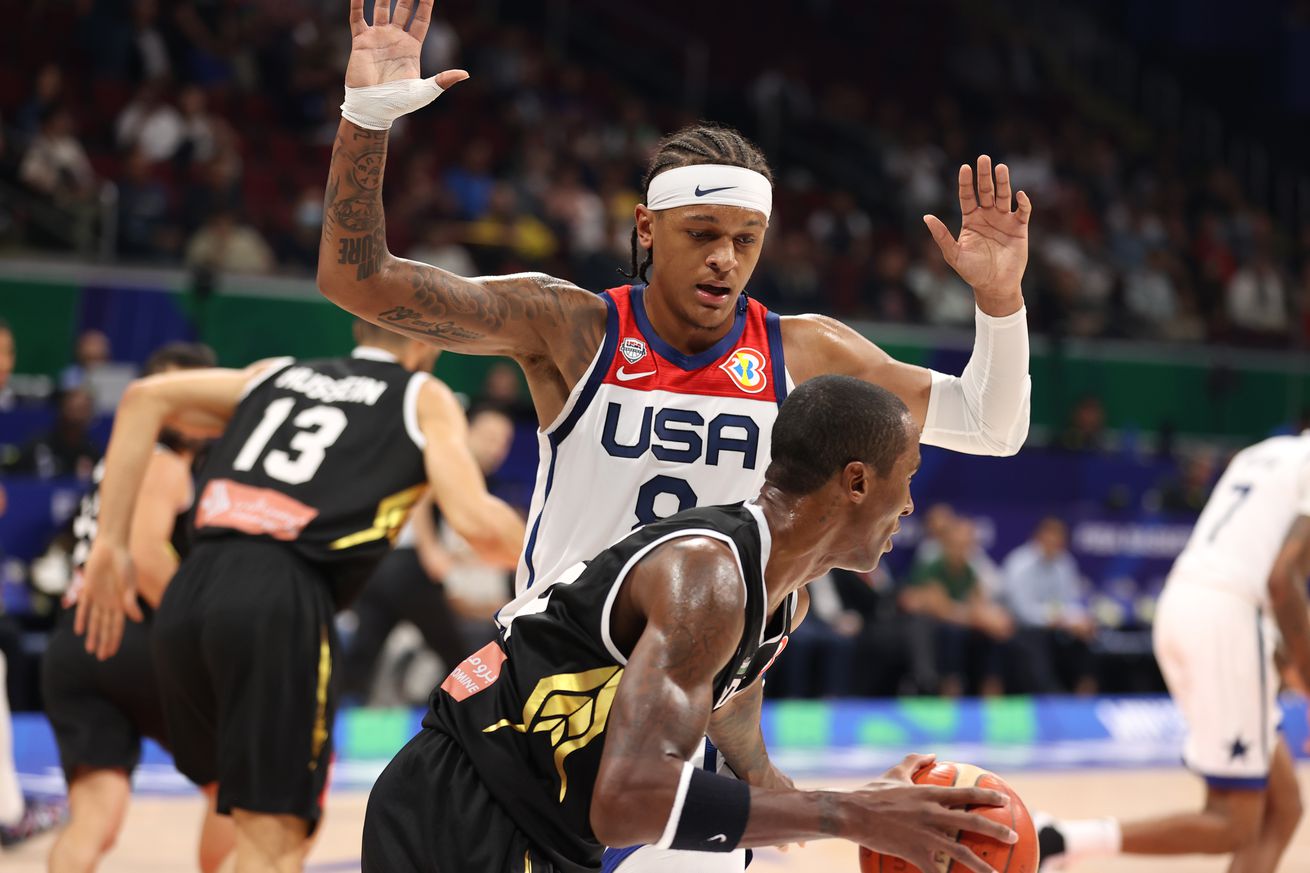Photo by Stephen Gosling/NBAE via Getty Images
Without many true centers on USA’s roster, Banchero has been shoehorned in despite playing very little center in his NBA career so far
One of my favorite aspects of FIBA play is getting to see familiar faces in unfamiliar roles. My favorite case of this among Team USA is Orlando Magic forward Paolo Banchero playing much of his time at the center spot.
Banchero played only three percent of his Rookie of the Year season at center according to Basketball Reference’s position estimate tool, which makes his corresponding power forward that much more important in those lineups. It also means some credit should go to USA head coach Steve Kerr for actually wanting to do it.
Fortunately, Cam Johnson played 88 percent of last season’s minutes at power forward; 97 percent during his time with the Suns. Josh Hart isn’t as used to it, but he did see his power forward minutes tick up from two percent with the Blazers to 15 percent after he was traded to the Knicks.
Hart is also just a positional anomaly whose total rebound percentage is often in the teens, high above most others his size. He’s able to fill in a lot of the gaps that playing Banchero at center creates, illustrating that well when he scored some second-chance points after a missed Banchero three.
The success of these lineups is determined a lot by matchups, but also by how Banchero is utilized on each end.
Starting with defense, I was surprised at how well Banchero held up against most “true” centers. The 250 pounds he carries is pretty well-distributed; I always thought that weight had to have been mostly upper-body strength to help him during drives and post-ups, but his core is really strong too.
Because of that, I think the most value in those lineups comes when you’re playing mostly straight-up, as opposed to switching all over the place like “small-ball” lineups can naturally morph into at times.
Data is all hand-tracked, and any minute discrepancies between official box scores is due to “double-big” lineups or garbage time, which I was especially careful to consider when it came to the Jordan game, which was already a 40-point game before the end of the third.
You can see over the course of the three games how much more effective Banchero was at the start of the week versus how his impact dwindled as USA went to him less often offensively.
The correlation is clear considering a team leading 21 points in a New Zealand game where his defense stood out above the other centers in the rotation. By the third game, Kerr seemed to have Walker Kessler ahead of Banchero at the center spot in a game where Banchero’s offense included just eight points on seven shots in 15 minutes.
None of that decline is necessarily bad given just how little center Banchero has played since reaching the NBA; if the Orlando Magic do want to experiment with this in their own time, it’s not something that will just look like sunshine and rainbows every time from day one. Center is one of the harder positions to play in high-level basketball, so he’ll get better at it over time despite any mistakes. But the fact that Kerr was willing to try it should give Orlando head coach Jamahl Mosley some courage to do the same.
You’ll notice some of the same principles translating to the offensive side as well. There are some plays in there where Banchero tries to bring his dynamic creation into advantageous situations where he’s matched up on the perimeter against true centers.
He’s also got the feel for how big men are supposed to behave while away from the ball in halfcourt sets. Constantly moving around and setting screens, Banchero’s able to dive hard to the rim, catch a pass, and launch into his jump all before the center is even able to react thanks to his “arguably a unicorn at the power forward” mix of size and athleticism.
Time will tell whether this will be a staple of Banchero’s game going forward as the World Cup concludes and he – joined by Germany star Franz Wagner – returns to Orlando, but I’m a basketball watcher who applauds teams trying lineup quirks that the average basketball thinker wouldn’t necessarily try.
Trying this could certainly usher Banchero into an era of basketball where these hyper-athletic forwards dominate the floor inside and outside, but if not, it is likely further helping his understanding of the floor, inter-positional relationships, and how he fits into those.













